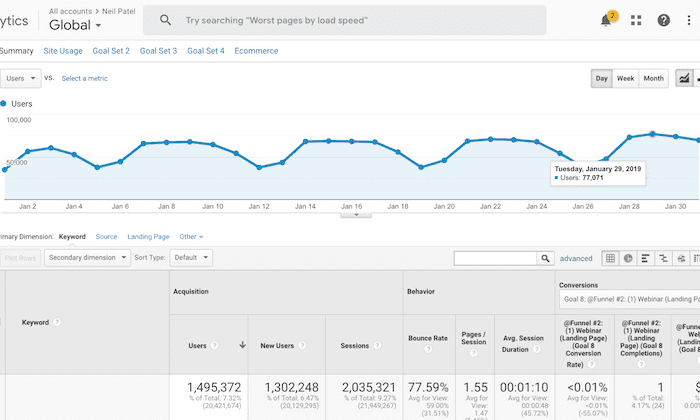
When you look at the chart above, what do you see?
A site that gets a ton of traffic, right?
I am a marketer, so I should be somewhat decent at getting traffic… or so you would hope.
But here is the thing, just because I am decent at marketing doesn’t mean my Google traffic keeps climbing up and to the right.
Just like you, I face challenges.
I have ups and downs, I can also get penalized, and I have to continually battle algorithm updates.
When you are doing SEO, nothing is ever going to be perfect and it won’t always go the way you want.
My overall traffic growth
Let’s look at my overall Google traffic. Here’s my organic search traffic in January of 2018.
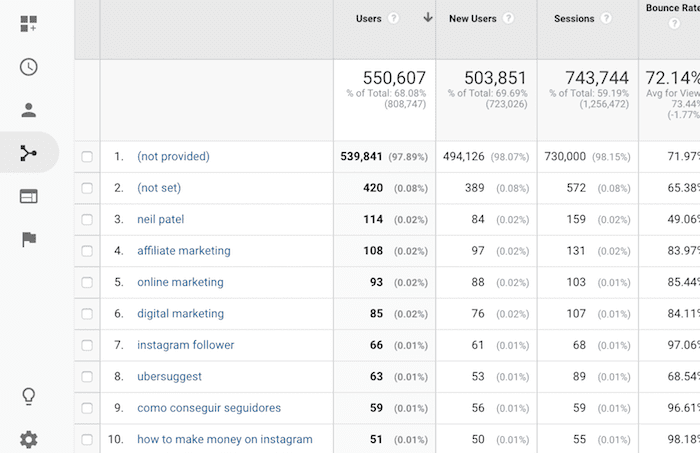
I had a whopping 743,744 sessions during that month. 550,607 of those sessions were unique visitors.
Now if you fast forward to January 2019, my organic search traffic increased to 2,035,321 sessions. Of those sessions, 1,495,372 were unique visitors.
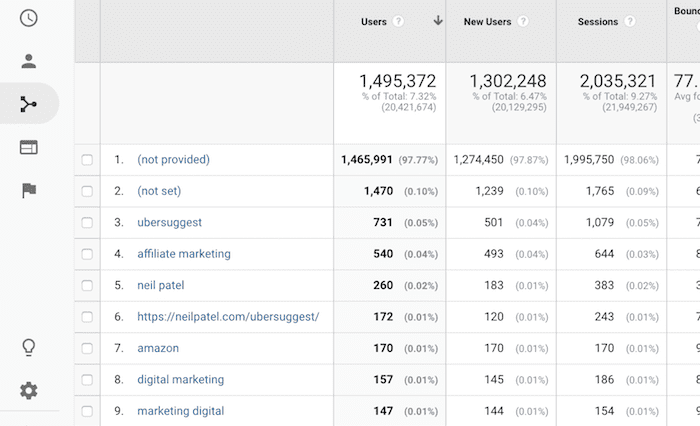
That’s a 173% increase in search traffic in just 12 months.
Now you may think that it was easy for me to achieve those results because I’m a decent marketer. But just like you, it’s a constant fight to maintain and grow my traffic.
And in many cases, it goes down.
My decline in search traffic
Yes, you saw my search traffic from January to January, but let’s look at the dips as well.
Here’s my search traffic in October of 2018.
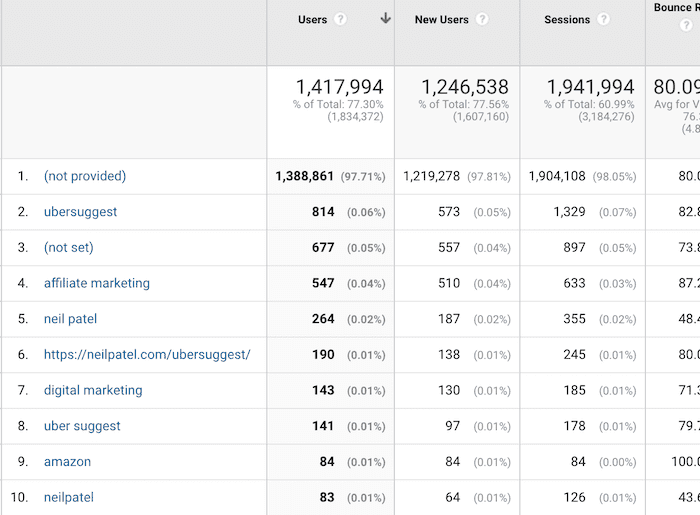
As you can see, I had 1,941,994 visits from Google of which 1,417,994 were unique.
Now when you fast forward to November, my search traffic went down to 1,799,837 visitors of which 1,347,775 were unique.
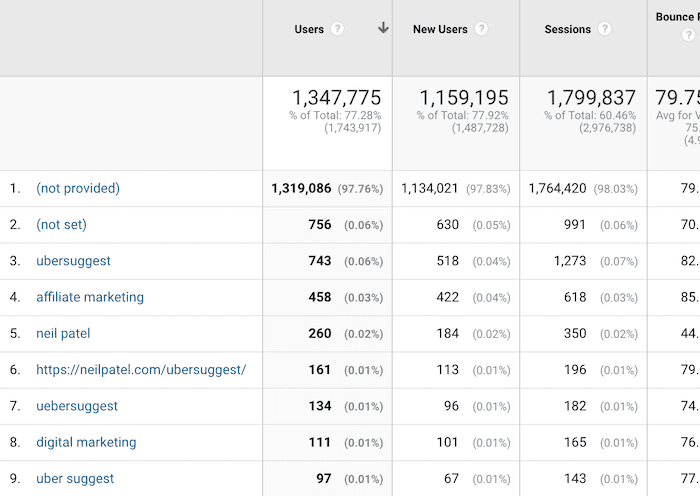
That’s a 7.3% decline in search traffic.
Sure, November had one less day than October and there was a holiday in the United States in November… but my traffic is global and NeilPatel.com is currently in 10 different languages.
In other words, there are holidays everywhere in the world every single month. Plus, the United States only makes up 23% of my total traffic.
And, of course, in December it got much worse, but I expected that as that happens each year.
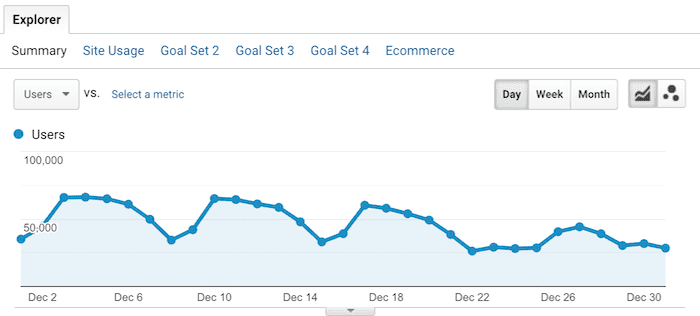
As you can see from the graph, the last few weeks are really slow, but that is because of Christmas and New Years.
So, how do you know when your traffic is dropping?
If you don’t, you should start looking at your Google Analytics daily.
The one report I look at to make sure everything is going right is a week over week comparison.
The reason you want to look at a week over week comparison is that your traffic is going to fluctuate day by day. For example, Tuesdays are typically my highest days and Saturdays are typically my lowest days.
The last thing you want to do is compare a Saturday with a Monday.
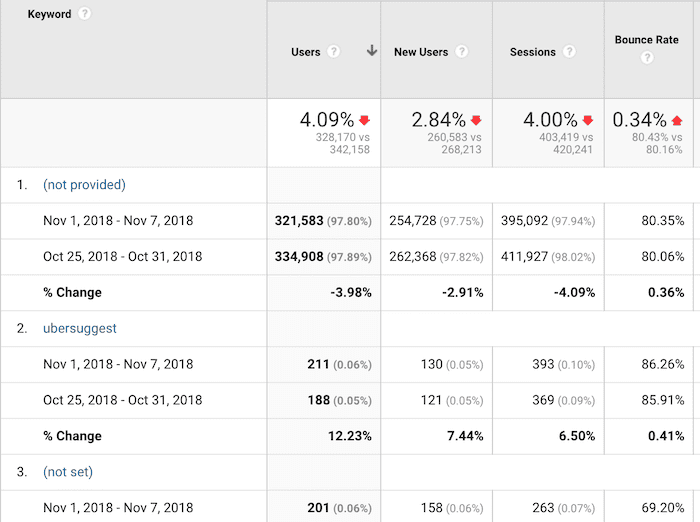
As you can see in early November, my search traffic started to drop. In the first week, I saw a 4% dip.
And on Tuesday I saw a 6.94% drop in search traffic.
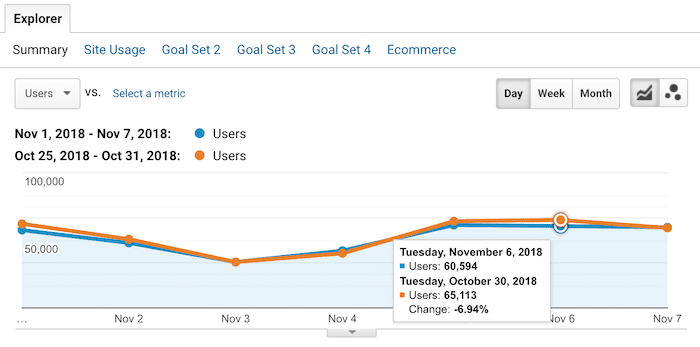
In the following weeks, the traffic didn’t bounce back. That’s when I knew something was off.
Now when you start to see traffic drops you shouldn’t panic. The first thing you should do is head over to this site.
It will tell you if there is a holiday somewhere around the world that could be negatively impacting your traffic.
The second thing you should do is check out Search Engine Roundtable, as they tend to cover more algorithm updates than anywhere else. They’ll even break down what people are experiencing and potential solutions.
Assuming your traffic did drop and it didn’t bounce up within a week or two, you need to start making changes.
The longer you wait the harder it is to recover your decreasing search traffic.
How do you increase your search traffic when Google keeps reducing your rankings?
9 out of 10 times when your traffic drops it’s related to your content. Whether it’s content on one page or content on your whole site it typically is content related.
The moment you see drops you need to login into Google Search Console and see if there are any messages.
Chances are, there won’t be any messages. ?
The next thing I want you to do is to click on “Performance.”
You should see a screen that looks something like this:
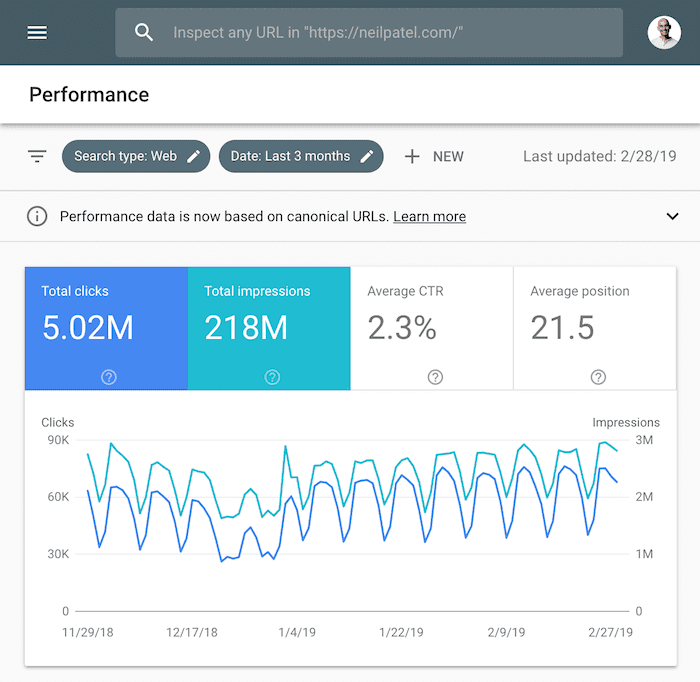
Now click on the date button above the graph. It should say “Date: Last 3 Months.”
Then click on compare…
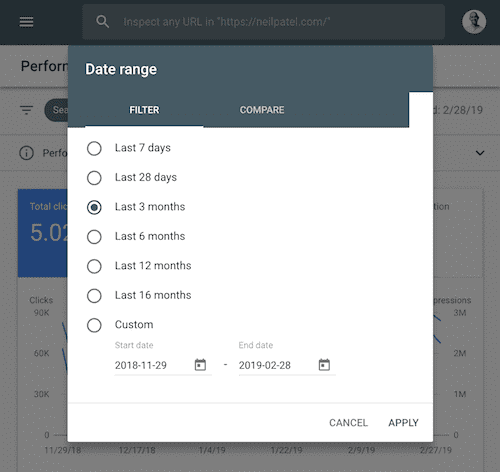
Then enter the dates you want to compare on start versus end date. Make sure you select a 7-day period so you get the full picture.
You should now see a report that looks something like this…

I want you to unclick “Impressions.”
Then, I want you to click “Pages” and sort by “Difference” (the arrow should be pointing up).
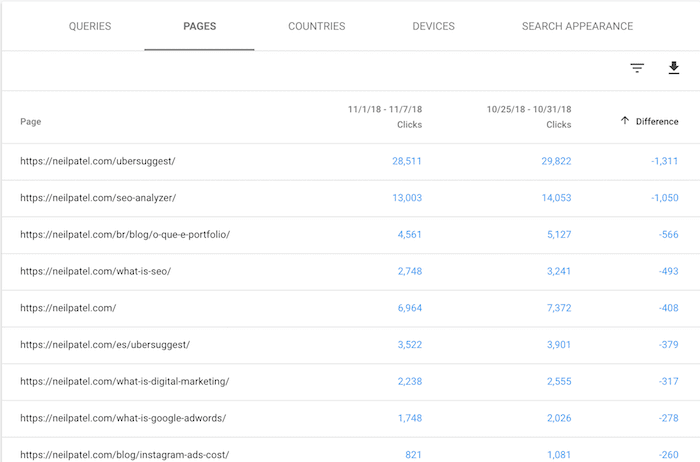
This will show you all of the pages that dropped in traffic. These are the pages that lost the most significant rankings and, ultimately, your drop in traffic.
Next, I want you to click on a URL. You should start from top to bottom (you’re going to have to repeat this process for each URL with a massive drop).
Then click on queries and again sort by Difference.

Now before you do anything, scroll back up and click on “Position” in the graph. This will adjust your table and show you if your rankings dropped for any of those terms.

Assuming it did drop, I want you to do a Google search for that term and look at all of the sites that rank in the top 10 and compare your content with those that are ranking on page 1.
I know there are companies that offer software solutions that break down all of the keywords your competitors use on their page and it tells you what you are missing. I spent over $60,000 doing this in 2017 and it didn’t help boost (or even recover!) any of my rankings.
Instead, I want you to ignore all of the SEO software out there and just put yourself in the user’s shoes.
What do you honestly think of your competitors’ pages? Is their content better than yours? Is their design more user-friendly? Does their site load so much faster that it creates a better experience for you?
When you put yourself in the searcher’s shoes, it will give you an idea of what you need to fix.
I know I am making it oversimplified, but it really comes down to doing what’s best for the user. In most cases, that might be adding better images or improving your content because it isn’t up to date.
It’s not about keyword stuffing or having more words than anyone else. Heck, I rank higher than my old blog Quick Sprout for the same terms, with content that contains fewer words.
Just look at the term SEO. I’m on page 1 of Google for it:

Now let’s look at my SEO guide. It contains 10,244 words.
The Quick Sprout guide on SEO has 9 chapters and is a bit shy of 30,000 words.
Can you guess where the Quick Sprout guide ranks?
Middle of page 2.
The point is, it’s about quality.
That’s why most sites lose their rankings. Because other sites come out with content that is better for users. It doesn’t matter that it doesn’t have as many backlinks or that the word count is lower. In the end, Google focuses on user metrics.
Things like backlinks can help boost your rankings temporarily, but if the user metrics show that people hate your content once you are at the top, your rankings will drop.
This can’t be the case, my content is better and my rankings keep dropping
You might look at the steps above and believe your content is better but your rankings keep dropping. You might even talk to users and they agree and give you the same feedback. They think it’s better. So what’s going on?
The chances are your rankings dropped because of age.
Do you remember how my traffic dropped from October to November? Well, in November, I hired a few contractors to help fix my old content.
A lot of it wasn’t outdated and through surveying, we found people were happy with it. However, it just wasn’t ranking.
I had more backlinks than my competition and even more brand queries.
So, I embarked on a journey where I had a few people update my older content pieces. Sometimes they only adjust a few sentences and sometimes they rewrote entire paragraphs or sections.
That one thing grew my search traffic to 2,199,658 visitors over the last 31 days:
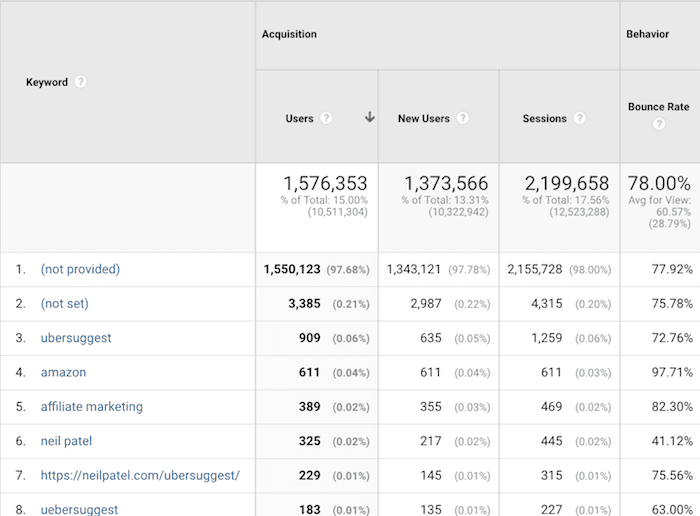
With over a billion blogs on the web, Google truly has its choice of deciding who to rank. There’s too much content to rank on the web, so when picking between 2 sites that are almost identical in SEO metrics, they are going to pick the fresh site versus one that hasn’t been updated in years.
Conclusion
No matter how good you are at SEO, you are going to see traffic drops. The key to seeing consistent growth year over year is to focus on the process I outlined above.
I know people still talk about backlinks and on-page SEO. But that is something everyone already does and you should be as well.
To truly stand out in the crowd, you need to put yourself in the searcher’s shoes and create the best experience for them.
And a simple thing like updating your old content will usually solve the problem and boost your traffic. ?
So, how often do you update your old content?
The post How I Grew My Declining Google Traffic appeared first on Neil Patel.
![]()





